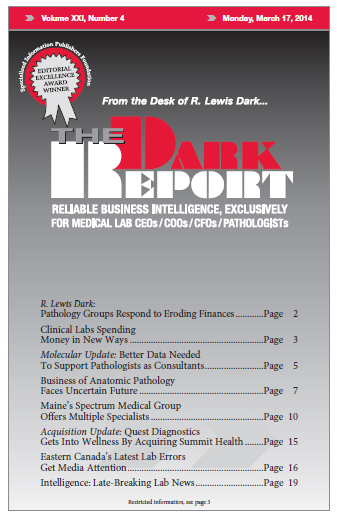CEO SUMMARY: In response to the many changes now unfolding in the U.S. healthcare system, labs are investing their scarce capital in different ways. Five trends in lab spending can be identified. They range from expanding the informatics capabilities of a lab organization to acquiring the hottest new diagnostic technologies. For lab industry vendors, some …
Clinical Labs Spending Money in New Ways Read More »
To access this post, you must purchase The Dark Report.


